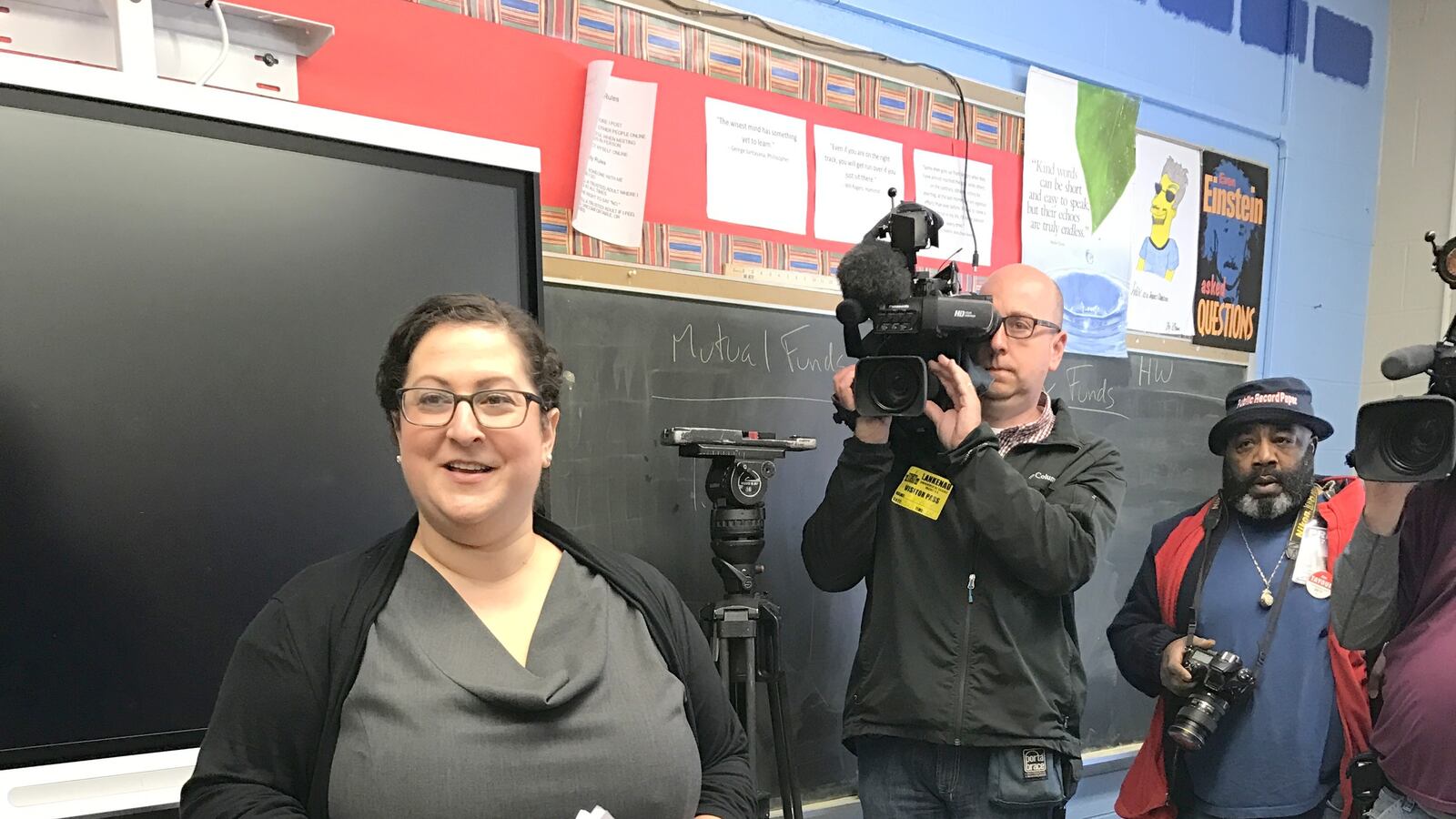This article was originally published in The Notebook. In August 2020, The Notebook became Chalkbeat Philadelphia.
School District and city officials Monday announced a new initiative designed to increase energy efficiency in school buildings and use the savings to underwrite needed capital improvements.
The project will begin with a pilot in three schools, yet to be chosen, that will involve making repairs on such systems as boilers, windows, roofs, lighting, and electrical grids to reduce energy costs and make the buildings more sustainable. Those savings will then be used as collateral in a bond sale or other financing method to help pay for the repairs and upgrades.
In January, the District released a Facilities Condition Assessment showing that its buildings have $4.5 million in deferred maintenance on 300 buildings, and will accumulate another $3.2 billion in repairs over the next 10 years.
Such a program is a “no brainer,” said City Council President Darrell Clarke, who appeared at a high-profile kickoff event at Lankenau High School in Roxborough along with Superintendent William Hite, Council members Curtis Jones and Bobby Henon, and Emily Shapira, executive director of the Philadelphia Energy Authority. Representatives from many of the city’s building trade unions also attended, as did Philadelphia Federation of Teachers president Jerry Jordan.
Clarke said that the pilot program “could yield up to $345 million in new funding [and] comes at no additional cost to taxpayers.” This would happen because the Pennsylvania Guaranteed Energy Savings Act allows for “energy performance contracting” that converts energy savings to capital improvements for public buildings.
“This is an awesome initiative,” Clarke said. “It’s time to go bold, it’s time to go big.” The goal is to create a model that can be emulated by other school districts.
According to an analysis by the Philadelphia Energy Authority, “This work will result in up to $600 million in savings over 20 years, and will not require any out-of-pocket expense over and above the [District’s] existing utilities budget.”
The project will improve conditions for teaching and learning in schools and classrooms, said Hite, by improving environmental conditions. Now, many buildings, including Lankenau, have classrooms that now are often either too hot or too cold due to faulty boilers or poor insulation, or old windows. Buildings also have poor lighting and ventilation, leaky roofs and other problems identified in the capital projects report.
Part of the initiative is to connect labor unions with students in Career and Technical Education programs who achieve certifications and can get jobs after graduation.
The District is putting out a “request for proposal” to energy performance engineering firms to evaluate buildings and choose the three pilot schools. Lankenau, located in the woods in the city’s far northwest corner, could be one of those chosen but not necessarily.
Its “facilities condition assessment” score was 39 – not among the worst, but not among the best, either. Still, some of its classrooms are too hot and others are too cold, resulting in a waste of energy. It is not uncommon for teachers to open windows during the winter because the heat cranks up so high.
That results in a huge waste of energy, said Emily Schapira, executive director of the Philadelphia Energy Authority and co-author of its report on the District.
She said that the District spends $45 million annually on utility costs. The goal is to reduce that by half, to $23 million initially. Factoring in a 3 percent annual increase in energy costs, meeting that goal would result in a $600 million savings over 20 years.
The District now has no in-house energy staff, and the PEA is urging that they hire several people to manage the contract with the outside energy firm that does the work.
That firm would be an ESCO, or energy savings company, that specializes in optimizing energy savings and consulting on making buildings efficient and sustainable. Those firms operate on a performance contract that promises a certain amount of savings and is paid based on whether it delivers.
The District can then use the projected savings as collateral for borrowing to do the capital improvements themselves, with the savings exceeding the debt service on the borrowing.
The three current schools will be chosen based on several factors, Hite said. Those include enrollment, the likelihood that it will be open for the foreseeable future, size, its current energy use, whether it is used for summer and afterschool programs so savings can be maximized, its current conditions including indoor air quality, the amount of potential savings, and its current leadership.
The School Reform Commission will need to approve contracts and borrowing. The goal is to start working in the schools during the next school year.


